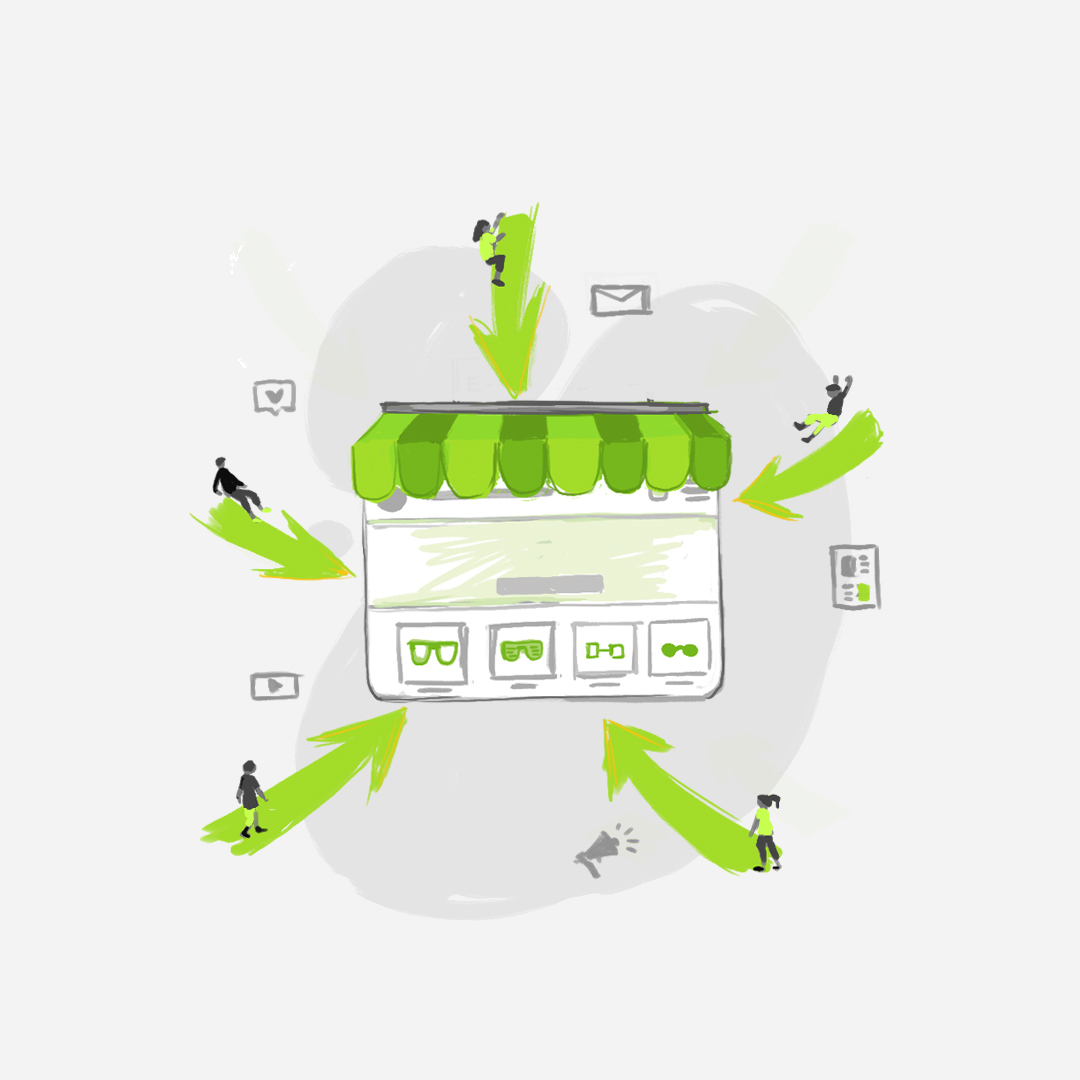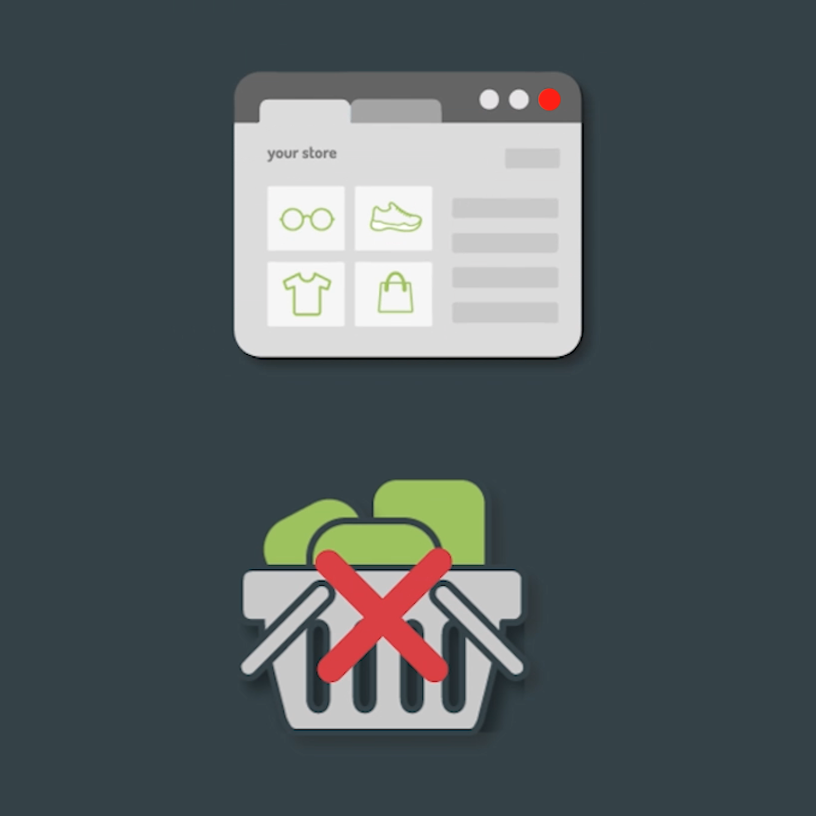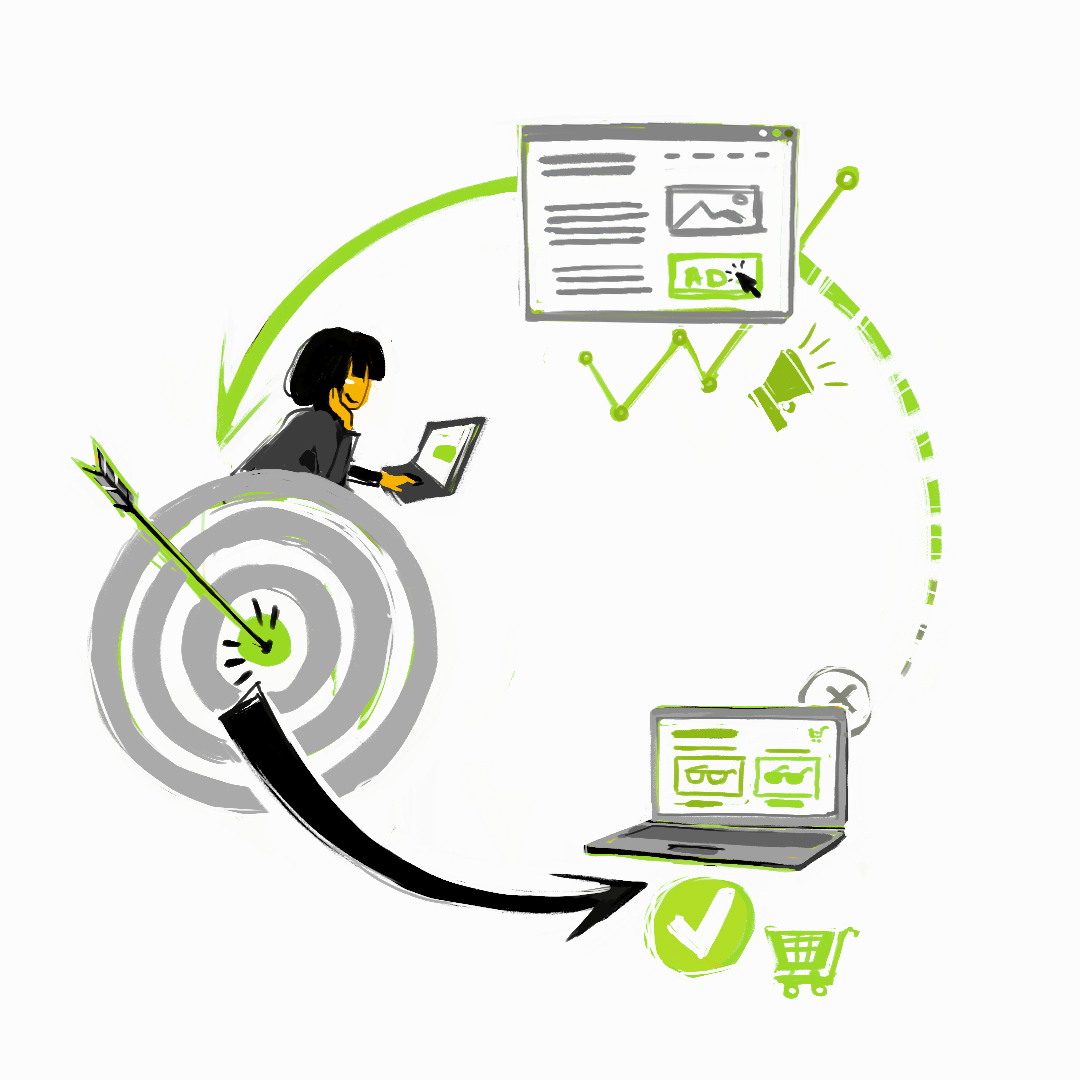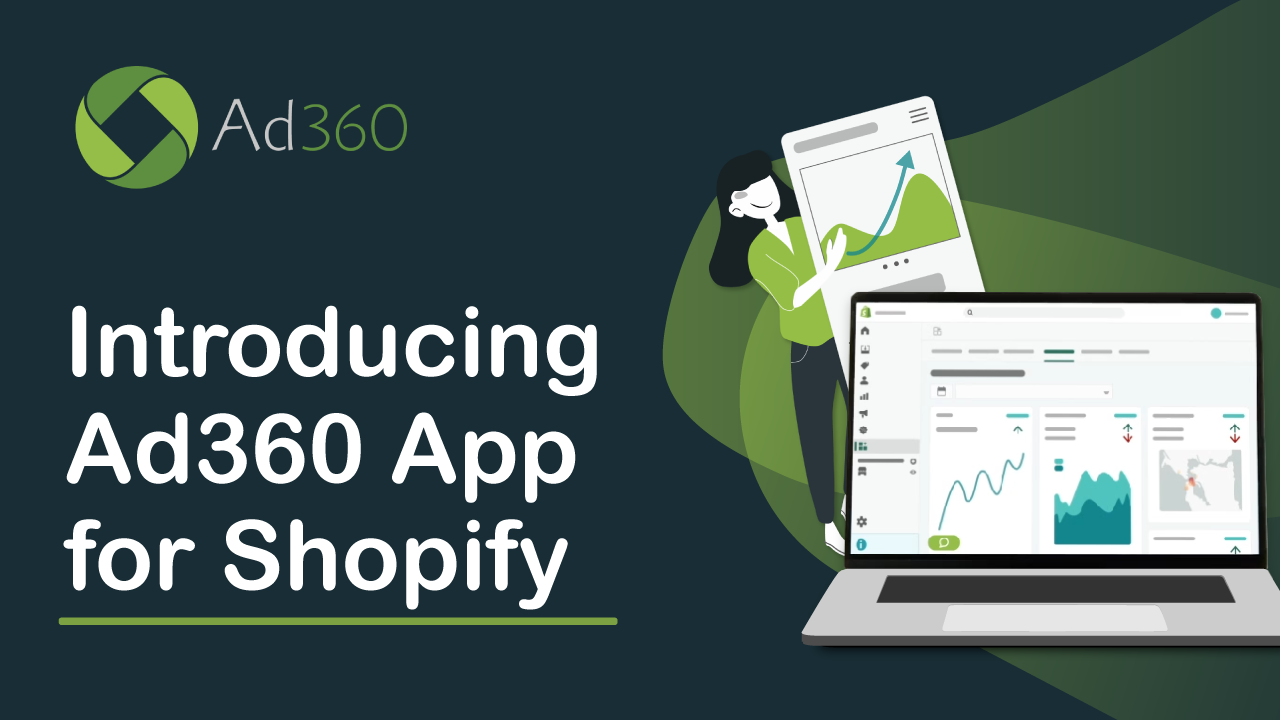Frank’s story pt2: Making Ads Work

This article continues Frank’s story, after the Part 1 in which Frank struggled to bring traffic to his new Shopify store.
Frank had accomplished a vital company goal during the pandemic – he moved his entire inventory online to Shopify, competing with all major retailers on the web. He also knew only losers and chumps rested on their laurels. Sure, the basics were out of the way, but Frank felt like a fish trapped in the social media “fishbowl” – an echo chamber he couldn’t market his way out of.
Unsure of where to start, Frank bought ad space on Google and Facebook. While he wasn’t experienced with these platforms, Frank invested thousands into marketing on social media because “that’s how many people do it now.” Frank is an expert on his store’s products, not marketing. He quickly found out the devil is in the details of online ad targeting – you need data analytics to uncover sales patterns and trends invisible to the naked eye. Frank needed to figure out how this all worked for his Shopify store… and quickly!
The social media advertising… it kind of worked. But Frank found himself as one of the 62% of business owners whose ads completely miss the mark. His social network was only seeing about 16% of the ads he put out… and it was draining his company funds.
If Frank didn’t find new horizons and more effective ways to promote his Shopify storefront online, he’d be insolvent in 2 months. Every time he looked at his online visibility and marketing versus the revenue brought from these efforts… the guy needed a scotch.
On a final hurrah, Frank installed the Ad360 App for Shopify, which quickly introduced ad retargeting to Frank: something that went beyond social media. He knew he was onto something big when a few recent customers said they had found out about his Shopify store while surfing across the web.
One customer even said they heard about Frank’s Shopify store while reading a story on CNN international. “HOW?!” Frank exclaimed while his eyes lit up with excitement…
The ad technology had saved the customer’s interest in his store, and Frank’s product automatically popped up as an ad while the buyer scrolled through the news! The magnitude of that shift in visibility made Frank’s unique daily visitor go up and his sales significantly increased, without spending more ad budget. Really. We know it’s challenging and can be discouraging. Still, Frank’s story is not unique – and it changed his life and the life of his family for the better, forever.
Do you really feel you have researched and explored every vector of your Shopify store online promotions? Many Shopify owners need just a little push – and a little more visibility across the web – to truly flourish.
Find out how Ad360 takes local Shopify stores to success through next-gen ad retargeting. When customers start seeing your ads across more than just social media, you’ll want to keep driving ahead and never look back 😊
Be our next success story! Try Ad360s free demo today to learn more about leveraging new innovations in online advertising.
How to turn abandoned carts into sales

Here is a story that is all too frequent for shop owners:
Christine visited a section of your website two days ago to purchase a dress from your online store. She likes the dress very much, and she already imagines herself smiling when she unpacks the dress and wears it for the first time.
But while she was about to hit the “order” button, a notification from work came into her phone.
Christine leaves your website and takes the call, which requires her to open a new tab on her phone for quick work research. The rest of the day gets busy for Christine, and she forgets to complete her transaction on your online store.
Has this ever happened to you? That wouldn’t be surprising since about 96% of people leave a website without purchasing for different reasons.
What if you could remind Christine about the dress so that she comes back to the website and completes the transaction?
This is precisely what retargeting allows you to do!
Retargeting, also known as remarketing, is a form of high-performance marketing that drives sales in a unique and specific method. It allows you to show personalized ads to people who have visited a particular page or section on your website. While they go through other websites online, they see ads from your site to remind them of their unfinished transaction. Retargeting efficiently converts abandoned carts into sales because the ad goes directly to the persons who have already demonstrated an interest in your store and products.
Are you interested in learning more? This article explains everything you need to know about retargeting and why it’s indispensable for a successful e-commerce business.
At Ad360, our mission is to help business owners of all sizes grow and be happier. You can quickly get started with retargeting, thanks to Ad360 App for Shopify.
Why is Retargeting indispensable for success?

What Is Retargeting, and Why It’s Indispensable When Running a Successful eCommerce Business?
Retargeting is a type of online advertising that uses website cookies to track your website users. Even after prospective customers leave their site, you can target them with ads for your brand or product.
This process is the best-performing and most efficient type of advertising because it only shows ads to consumers who have expressed their interest in your product or service. By targeting warm leads, conversion rates go up, meaning ad spend is justified.
The Problem
Less than 2% of consumers purchase something on their first visit to an eCommerce website. On top of that, some reports suggest that more than 90% of consumers who first visit a website have no intention of making a purchase.The majority of web traffic is there to compare prices or review your items.
In fact, it takes several interactions with a brand before a consumer makes a purchase. Salesforce suggests the number is between six and eight. Other estimates say it takes as much as ten.
Whichever way you look at it, getting visitors to your eCommerce website is just part of the battle. Making further impressions via marketing, advertising, reviews, word of mouth, etc., is what is needed to ensure sales.
These numbers demonstrate just how difficult it is for eCommerce brands today. Additionally, they highlight how difficult it is for merchants to compete in a crowded marketplace.
The Solution
Retargeting offers eCommerce websites an excellent solution to these issues. By targeting consumers who have expressed an interest in your products or services (by visiting your site) and targeting them with ads, you can increase the interactions that lead to sales.
Retargeting — also known as remarketing — has been used by digital marketing specialists and big brands for a long time. It’s a popular form of advertising because it gets excellent results.
As we mentioned earlier, it’s the most effective type of marketing you can do because it deliberately targets warm leads. Instead of paying for advertisements that hopefully target a demographic, retargeting serves ads to people who are already interested in your products.
However, despite retargeting’s proven track record, many small eCommerce businesses don’t implement this form of advertising. There are a couple of reasons for this:
A) They don’t know about retargeting
B) They believe that retargeting is too challenging to do.
Not knowing about something is understandable. Running an eCommerce store has a big learning curve. It’s a lot of work, with many things to set up and suppliers and customers to deal with.
As for believing it’s too challenging, that can be true too. Sometimes it is hard for people to implement retargeting, especially for eCommerce store owners who aren’t digital natives.
However, eCommerce merchants need to overcome these challenges. The world of digital retail has shifted over the last few years. Failure to keep up with the times and use every tool at your disposal could lead to a closing business.
How eCommerce Has Changed in Recent Years
eCommerce has been a significant growth sector over the last decade or so. In 2014, the industry was worth around $1.3bn. That number will be about $5.4bn in 2022.
The pandemic exacerbated the existing trend toward an online economy. During the lockdown, many brick-and-mortar businesses went digital. Additionally, a glut of new merchants moved into the space, hoping to be part of this thriving sector.
eCommerce sales account for almost 1 in 5 of all retail sales worldwide. However, despite these positive numbers, 90% of eCommerce businesses fail in the first three months.
There are several reasons why eCommerce businesses don’t work. The top three are:
a) Poor online marketing
b) A lack of search engine visibility
c) A lack of demand for their products or services
This scenario is heartbreaking. Starting a business is such an exciting time for many entrepreneurs. It’s a significant investment of time and money, not to mention hopes and dreams.
However, many eCommerce business owners quickly realize that getting a slice of the online retail pie is difficult. While the market is growing, so too is the competition.
One solution for eCommerce business owners is to run ads on social media (like Facebook or Instagram) or search engines like Google. But the increase in competition means that these marketing avenues have become more expensive and less effective.
In short, it’s hard for businesses to stand out and run ads that result in a return on investment. Most companies don’t have a bottomless pit to pay for advertising while their store takes off.
Retargeting is the solution to this issue because it helps businesses increase sales while keeping costs in check.
How Retargeting Works
While it may seem daunting to set up, retargeting is a simple process.
When a visitor comes to your website, it drops a cookie (sometimes called a pixel) on their web browser. These cookies can identify each user as they navigate the web.
For example:
Martha needs a good winter coat. She visits an eCommerce store and sees a brand that she likes. The website records Martha’s visit and attaches a cookie to her browser that indicates her interest in the product or the website.
Later, Martha browses her favorite websites: Facebook and the New York Times. She is greeted with some ads that are based on the cookies the eCommerce store saved. Martha is reminded of the brand and the winter coat she was interested in.
This process serves as one of the “touchpoints” or interactions required for a sale. Martha decides that it’s time to buy the coat and clicks through on the ad or goes directly to the merchant’s website.
This story is a simple illustration of the power of retargeting. It helps serve personalized ads to people who have already expressed an interest in a product. This process can help remind them or convince them to make a purchase.
Benefits of Retargeting
Almost 70% of consumers say they are happy with personalization on one condition; that the information used to target them comes from first-party data.
Put plainly, consumers are OK with an eCommerce store collecting their information and using that to send them personalized ads. However, they are less keen about an eCommerce store buying data from a third party, like Facebook, and using that information to target them with ads.
Retargeting satisfies these criteria because it uses a customer’s visit to the site as the prompt to send them a personalized ad.
For eCommerce businesses, retargeting has many benefits.
Retargeting:
1) Increases brand awareness by keeping a business fresh in the user’s mind
2) Makes advertising more efficient by targeting interested consumers
3) Reduces the cost of marketing and advertising campaigns
Another great benefit of retargeting is how it combats what is known as “ad blindness.” Ad blindness is the term for a phenomenon that we are all familiar with.
When we browse the web, we are met with many advertisements. After a while, we tend to tune them out, whether consciously or subconsciously. According to some studies, ad blindness affects around 86% of consumers.
When you think about it, that is an incredible number. Almost 9 in 10 people don’t see or notice ads. You’re paying good money for ad space, but for many of your potential audience, your ads might as well not be there.
The good news is that retargeting doesn’t suffer from this problem. In fact, statistics suggest that 75% of consumers notice retargeting ads. The likely reason for this is because they already have an interest and awareness of your brand.
That is the power of personalization.
The Remarketing Sales Funnel
If you are running an eCommerce business, you’ve probably heard terms like sales or marketing funnel being tossed around. Typically, these funnels are used to describe the various stages of a customer journey, from first finding out about a brand all the way to making a purchase.
It’s helpful to break this process up into stages. It makes it easier to identify where you are going wrong and what areas you can improve, for starters.
Remarketing also has a sales funnel; however, it’s a bit different from the traditional models that you’ve probably encountered.
The remarketing funnel can be broken down into four simple stages:
- Cold Leads
- Warm Leads
- Hot Leads
- Resale and Upsale Leads
Each of these stages describes where your prospective customers are in relation to your products or services.
Let’s explore each stage and see how retargeting can help.
#1. Cold Leads
OK, so you are probably a bit confused. Isn’t the whole point of retargeting to focus on people who have already expressed an interest in your product? Shouldn’t we just be starting with warm leads?
Well, not exactly.
You see, cold leads can be part of a solid remarketing strategy because you can install a cookie or tracking pixel on the browser of someone who has visited any part of your site, including a blog.
You can combine retargeting with a content marketing campaign to drive more customers into your funnel. For example, if your eCommerce store sells golf equipment, you can write articles about golf. These could be product reviews, interviews, or tips and tricks on improving your game. Likewise, you can produce YouTube videos and retarget viewers.
Essentially, this stage is about increasing brand awareness. You are casting a wide net and getting attention from interested parties in the hope of turning them from cold leads who don’t know anything about your brand into warm leads that could become customers in the future.
#2. Warm Leads
Warm leads are customers actively looking for a solution to their problems. They are researching and evaluating different products and finding the right one.
eCommerce stores have a few different options here:
A) They can retarget based on a particular product they’ve expressed interest in
B) They can retarget based on all the products they are interested in.
If you have an eCommerce store focused on one particular item, then promoting that is sensible. However, if your store sells shoes, it might be worth paying for a carousel ad that shows several products.
#3. Hot Leads
Hot leads describe the prospects who are ready to buy. They’ve done their research and price comparisons, and all that’s left is to make a decision.
This stage is where remarketing excels at keeping your product fresh in the mind of potential customers. They’ve weighed up various solutions, and they’re thinking about which one is best. As they browse social media or news websites, your ads will serve as a gentle reminder.
Again, there are a few options that eCommerce stores can explore here.
A) Use ads to remind the consumer about your product
B) Anticipate the final objections that consumers might have about your product. It could be about price, quality, your returns policy, shipping costs, payment methods, and so on.
Retargeting offers a few different ways that you can alleviate these concerns. You could write an ad copy that addresses issues and promotes your product.
C) One time-honored sales tactic to employ is creating a sense of urgency. For example, you could offer a discount for a limited time or some other perk like free shipping.
#4. Re-sale and Upsale Leads
Many eCommerce business owners don’t realize that one of their most significant potential sources of revenue is their existing customers.
Of course, there is a delicate balance to be struck. We’ve all had the experience of buying a gift for someone online and then being bombarded with emails and ads by that same retailer for months afterward. It’s not a nice feeling, and it can actually lower our company’s opinion.
That said, retargeting your existing customers with relevant products they are likely to need is a powerful tactic.
Summary
Retargeting is the process of using web cookies to serve ads to people who have visited your website or product pages. It’s the most effective way to advertise because you target warm leads who have already expressed an interest in your product.
Competition in the eCommerce sector has increased considerably over the last few years. The cost of acquiring customers via ads is also on the rise.
For an eCommerce business to survive, they need to get smart and find a way to stand without running ads that bankrupt their company. Retargeting offers the best solution to this problem by effectively and efficiently serving ads to warm users.
If you’re interested in exploring how Retargeting can help your business thrive, let’s have a chat. The Ad360 team is here to help businesses of all sizes succeed and be happy! We’d be delighted to have a conversation with you and show you a demo of how Ad360 App for Shopify makes Retargeting easy to get started with for any business, even if you have no technical skills whatsoever.
Click here to Book a Demo with Ad360 App for Shopify
Introducing Ad360 App for Shopify

We are honored to present to you our new product: Ad360 App for Shopify!
Ad360 is building the next-generation platform to help e-commerce businesses of all sizes be more productive, grow efficiently and easily with minimal technical knowledge and no middlemen.
Watch the Explainer video below on YouTube to learn more!
E-commerce is booming. More people than ever are starting an online business. It’s great!
But this also means it’s difficult to stand out.
Do you have trouble being visible online and driving buyers to your store? If you’ve tried advertising, you know it can be complex and time-consuming.
That’s why we created Ad360 App for Shopify.
Ad360 helps businesses of all sizes be more productive and grow easily, with minimal technical knowledge, cutting out the middleman.
Handling multiple advertising platforms can be overwhelming. Ad360 centralizes all your ads in one place. Now you can easily run Google, Facebook and Menadex Media Web & In-App ads, directly from Ad360 App for Shopify. Making your business more productive, and promoting your products all over the web.
We’ll help you stop wasting days managing your individual ads. Ad360 automates your advertising campaigns to save you time. It’s easy to create a campaign in Ad360, All you need to do is set your budget, dates, and goals. Ad360 uses your Shopify information to set everything else in the right way. We do the heavy lifting to make your life easier.
You can be successful even without a PhD in analytics. Ad360 improves your ads outcomes thanks to machine learning, It’s as if a team of data scientists were working for you 24/7. Your advertising budget will automatically be targeted towards where it needs to go, So that you can generate more sales.
And that’s not all. Store visitors often put products in their cart, but leave your website without completing their purchase. With Retargeting you can show them your ads on other sites and apps, to bring them back to your store, so that all those abandoned carts are converted into sales. Ad360 can generate display banners using your Shopify product data, So, you can start advertising right away. With the help of our geo-targeting tools, you control where people can see your ads. There are visual reports, that help you understand in a glance which ads work best. And you get a free audit plus amazing support and services, to help you along the way.
It’s never been easier to grow your business. Install Ad360 App for Shopify and try for yourself. Start for free today.